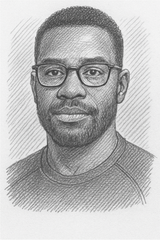Effective Remedies for Lower Back Burning Pain
Discover natural remedies and treatments for lower back burning pain, from exercises to lifestyle changes. Learn expert-backed solutions to find relief and prevent recurrence.

https://www.youtube.com/watch?v=K13h0TTy8qs
Research shows that about 80% of people will have lower back burning pain at least once. This common issue can quickly turn a simple day into a struggle.
Lower back pain is more than just a minor problem. It affects millions of Americans, causing ongoing discomfort and lowering their quality of life. The burning sensation in your lower back might point to serious health issues that need attention.
It's important to understand why chronic lower back pain happens. The lower back is often hit by stress, injuries, and wear and tear, leading to burning. Whether you're active, work at a desk, or are retired, knowing how to tackle these symptoms is key.
Spotting the signs early and using the right strategies can help manage lower back pain. Getting professional help and taking proactive steps can prevent long-term problems and help you move freely again.
Key Takeaways
- 80% of people experience back pain during their lifetime
- Burning back pain can stem from multiple causes
- Early intervention is critical for preventing chronic conditions
- Lifestyle modifications can significantly reduce back pain
- Professional medical consultation is recommended for persistent symptoms
Understanding Lower Back Burning Pain: Causes and Symptoms
Lower back burning pain is common, affecting about 80% of adults at some point. It can be caused by many factors that affect your health and how you move.
Knowing what causes lower back pain is key to managing it. Many people feel burning in their lower back. But, the reasons can vary and are often linked together.
Common Causes of Burning Sensation
Several things can lead to lower back pain:
- Nerve compression from herniated disks
- Muscle strains and tension
- Spinal arthritis affecting exercises for lower back pain
- Inflammatory conditions
- Degenerative disk disease
Being inactive for too long is a big contributor to lower back pain. This shows how important it is to stay active and do exercises that target the lower back.
Key Symptoms to Recognize
Knowing the signs of burning back pain is crucial. This helps you get the right treatment early. Look out for these symptoms:
- Persistent burning or tingling sensations
- Pain that radiates down the legs
- Muscle weakness
- Limited range of motion
| Pain Type | Prevalence | Risk Factors |
|---|---|---|
| Nerve Compression | 78% | Sedentary lifestyle, age |
| Muscle Strain | 65% | Poor posture, heavy lifting |
| Spinal Arthritis | 54 million adults | Age over 55, high BMI |
By understanding these causes and symptoms, you can take steps to manage your lower back health. This helps prevent more problems in the future.
Natural and Medical Treatment Options for Lower Back Pain Relief
Lower back pain needs a mix of natural and medical treatments. About 80% of adults face this issue at some time. Finding good treatments is key to a better life.
Home remedies can help at first. Cold and heat therapy works well, used for 20 minutes several times a day. NSAIDs help reduce inflammation and pain.
- Rest and recovery: Let injured muscles heal
- Over-the-counter pain medications
- Gentle stretching exercises
- Proper sleep positioning
Physical therapy is also important. Therapists create plans that include:
- Core strengthening exercises
- Flexibility improvement
- Posture correction
- Muscle rehabilitation
Mindfulness practices like yoga and meditation help too. Eating right, with foods that fight inflammation, aids in healing.
When pain doesn't go away, doctors might suggest more treatments. These can include:
- Prescription pain medications
- Cortisone injections
- Physical therapy techniques
- Surgical interventions (in extreme scenarios)
Preventing pain is just as important. Stay healthy, use good ergonomics, and exercise regularly. Walking or swimming are good choices.
Conclusion
Chronic lower back pain affects millions of Americans. About 80% of people will experience back pain at some point. It's important to understand and manage this pain well.
Recognizing symptoms early and getting the right care can greatly improve your life. This proactive step is key to managing lower back pain.
There are many ways to treat lower back pain. Physical therapy is very effective, reducing the need for surgery in up to 66% of cases. Exploring all treatment options is crucial for finding relief.
Prevention and early action are the best ways to fight lower back pain. Knowing the causes and symptoms helps a lot. It also helps in choosing the right treatment.
Remember, everyone's experience is different. Always talk to healthcare professionals for the best advice. They can tailor a plan just for you.
Your health is an investment. Stay informed and listen to your body. With the right knowledge and care, you can manage and possibly beat lower back pain.
FAQ
What is lower back burning pain?
Lower back burning pain feels like heat or intense discomfort in the lower back. It can be a sign of nerve irritation, muscle strain, or health issues. This pain can be mild or very sharp, making it hard to do daily tasks.
What are the most common causes of lower back burning pain?
Nerve problems like sciatica and herniated discs are common causes. Muscle issues like strains and overuse also play a role. Other causes include infections, inflammatory conditions, and health problems like diabetes.
When should I see a doctor about my lower back burning pain?
See a doctor if the pain lasts more than a few weeks. Also, if you have severe symptoms like fever or loss of bladder control. Or if the pain is getting worse or affects your daily life.
Can exercise help alleviate lower back burning pain?
Yes, exercises like core strengthening and gentle stretches can help. Low-impact activities like swimming or walking also work. But always talk to a doctor before starting any exercise.
What are some home remedies for lower back burning pain?
Home remedies include resting and using ice or heat. Taking anti-inflammatory meds and doing gentle stretches can also help. Using ergonomic support and managing stress are important too.
Are there any long-term treatments for chronic lower back burning pain?
Long-term treatments include physical therapy and chiropractic care. Acupuncture, prescription meds, and lifestyle changes are also options. In some cases, surgery may be needed. A doctor will create a treatment plan just for you.
How can I prevent lower back burning pain?
To prevent pain, keep good posture and exercise regularly. Use ergonomic furniture and lift safely. Stay hydrated, manage stress, and get enough sleep. Avoid sitting for too long.
👉 Join the Active Man Community
Get expert tips, workout guides, nutrition hacks, and the latest trends delivered straight to your inbox every week. No spam — just actionable insights to help you live stronger, healthier, and better.





